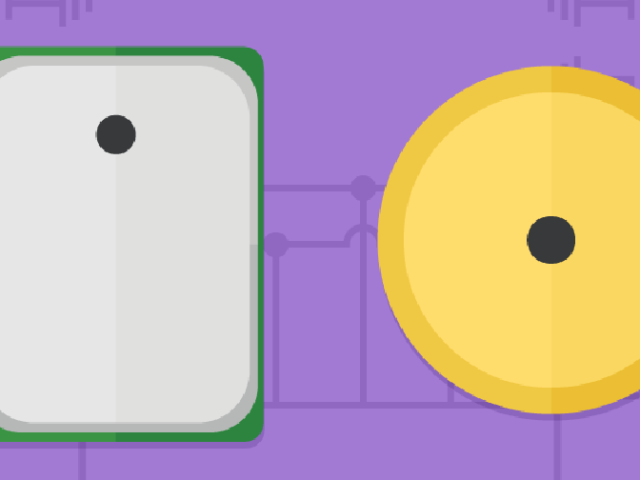Programming lies at the core of electronics software engineering, providing the essential tools to build, test, and refine systems. Proficiency in languages such as Python, Java, and C++ is foundational, forming the base upon which all other skills are built. But make no mistake – electronics software engineering is far more than just writing lines of code. The field challenges engineers to optimise for limited resources, debug complex systems, and collaborate effectively with diverse teams to deliver high-quality solutions under tight deadlines.
To succeed, electronics software engineers must embrace a blend of technical expertise, adaptability, and communication skills. This article delves into the five critical skills every aspiring engineer must master to thrive in this rewarding career.
Anthony Wall, Senior Software Engineer, ByteSnap Design further explores.
Programming and technical proficiency
Languages such as C and C++ are pivotal, particularly in embedded systems, where software operates directly on microcontrollers or low-level hardware. Additionally, C# and platform-specific languages are crucial for developing applications on iOS, Android, or other platforms requiring higher-level functionality. These skills allow engineers to work on a diverse array of projects, from sensor systems to full-featured embedded applications.
What sets electronics software engineering apart is the need for resource optimisation. Unlike desktop or web applications that can rely on gigabytes of memory and extensive processing power, embedded systems operate within tight constraints. Engineers need to be able to work with devices that have just a few kilobytes of memory or limited processing capacity. For instance, when designing software for a battery-powered device, engineers must ensure the software not only fits within memory constraints but also minimises energy consumption to extend the device’s battery life.
A deep understanding of mathematics, particularly applied and A-level mathematics, is also crucial. Engineers rely on mathematical principles to underpin algorithms, model system behaviour, and manage interactions between hardware and software components. Boolean algebra, for example, plays a vital role in creating efficient logic gates, while binary arithmetic ensures seamless low-level operations. Engineers must also develop systems where multiple moving parts work together without conflict, requiring logic-based problem-solving and attention to detail.
Electronics software engineers frequently face tight deadlines and must code efficiently to meet these constraints. They must balance rapid development with robust performance, ensuring their software is both reliable and adaptable for future requirements.
Testing and debugging expertise
Testing and debugging are key given the critical role of error-free systems. Testing involves more than verifying functionality; it ensures the software interacts correctly with the hardware and operates within specified parameters.
Traditionally, engineers relied on a ‘Debug Later’ approach, addressing issues toward the end of a project. While this method worked for smaller systems, it often allowed minor bugs to grow into major problems. For example, a typo in a service name might remain unnoticed during development but cause critical failures during deployment. Tracing and fixing such issues in production is time-consuming and costly.
To overcome these challenges, many teams have adopted Test-Driven Development (TDD). TDD involves writing tests before implementing features, ensuring issues are caught early in development. For instance, at ByteSnap Design, engineers used TDD to detect a typo in a service name during a minor patch update, preventing a significant debugging effort later in the project. Tools such as GoogleTest and GitHub Actions facilitate automated testing, ensuring that changes to the codebase are continuously validated.
Debugging embedded systems often requires a deep understanding of hardware-software interactions. Engineers might use tools like oscilloscopes or logic analysers to track issues such as timing mismatches between the microcontroller and peripheral devices. For example, ByteSnap Design engineers successfully used these tools to resolve timing conflicts during an ARM-based system integration, ensuring seamless performance.
Continuous learning and adapting
Electronics software engineering demands continuous learning and adaptability, as engineers are regularly introduced to new components, technologies, and methodologies. They must swiftly familiarise themselves with manufacturer-specific toolchains, compilers, and SDKs, which are often tailored to specialised hardware architectures such as ARM.
A good example of adaptability is managing compiler quirks. Engineers frequently work with vendor-supplied compilers that require precise versioning to ensure compatibility with the hardware. Even minor updates to a compiler can alter optimisation routines or the standard library, potentially breaking previously functional builds. Understanding these nuances and learning how to address issues as they arise are vital skills for success.
Equally important is an understanding of the Software Development Lifecycle (SDLC). This structured framework guides engineers through key stages of a project, from planning and design to testing and maintenance. For new engineers, familiarity with the SDLC ensures they can align their work with broader project goals while collaborating effectively in team-based workflows. For instance, a well-defined SDLC can help engineers identify dependencies early, enabling smoother integration of hardware and software components.
Time management ties these qualities together. Effective time management enables engineers to prioritise critical tasks, such as debugging high-priority issues, while maintaining steady progress on overall system development. Managing deadlines also requires streamlining workflows, such as through efficient testing, clear documentation, and robust version control practices. For example, ByteSnap Design’s use of Git-based workflows has allowed teams to stay coordinated and avoid delays during complex embedded projects.
Hands-on experience helps engineers build these skills. Hobbyist projects, such as designing microcontroller-based systems or programming sensor arrays, provide invaluable practical knowledge. These projects showcase an engineer’s ability to learn independently while preparing them to tackle real-world challenges.
Embracing business and communications skills
As we’ve established, electronics software engineering extends beyond coding and debugging. Engineers must navigate the business side of projects, balancing technical requirements with budgets, timelines, and customer expectations. Strong communication skills are key to ensuring that technical solutions align with project goals.
Collaboration with hardware teams is one example of how effective communication influences project outcomes. For instance, if a hardware team designs a system with strict power limitations, the software team must develop code that operates efficiently within these constraints. Miscommunication can result in costly redesigns or project delays. Clear, consistent dialogue between teams prevents such issues and fosters a smoother development process.
Engineers must also communicate with non-technical stakeholders, such as product managers or clients, to explain project progress and technical challenges. By translating complex ideas into accessible language, engineers can build trust and ensure that everyone involved in the project is aligned.
Recognising that ‘customers’ are not always external is another key insight. Internal stakeholders – such as testing teams or hardware engineers – rely on the software team’s clarity and responsiveness to make informed decisions. Fostering good internal communication ensures efficient workflows and stronger project outcomes.
Developing soft skills for teamwork and problem-solving
Soft skills, often underestimated in technical fields, play a significant role in an engineer’s success. Flexibility, pragmatism, and a solutions-oriented mindset are essential for navigating the unique challenges of electronics software engineering. Engineers must work collaboratively, embrace constructive feedback, and adapt to the needs of their teams and projects.
Passion for engineering often drives innovation. Engineers who tinker with electronics in their spare time or explore new technologies bring creative problem-solving approaches to their work. This enthusiasm fosters a deeper understanding of systems, enabling engineers to identify and implement innovative solutions.
Persistence and determination are equally important. Debugging a difficult issue or optimising a resource-constrained system requires patience and a methodical approach. These traits, combined with technical expertise, allow engineers to tackle complex challenges and contribute meaningfully to their teams.
Electronics software engineering is about solving problems, optimising systems, and collaborating to create efficient, innovative devices. Mastery of programming languages like C, C++, and Python is critical, but success also hinges on testing and debugging expertise, adaptability, an understanding of the SDLC, business acumen, and strong interpersonal skills. By developing these competencies and embracing the complexities of the field, aspiring engineers can build a fulfilling career in electronics software engineering. The challenges of this discipline are immense, but the opportunities to innovate and grow are equally significant, making it a field where motivated engineers can truly excel.




